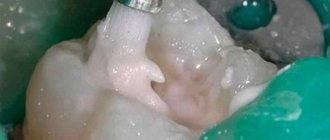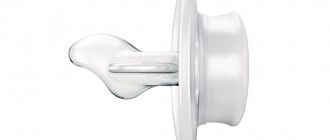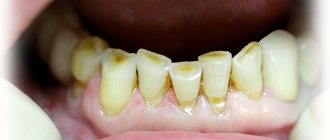Fluoridation of teeth in children is a way to strengthen enamel with the help of an element necessary for the proper development of a growing organism - fluoride. Of course, adults need fluoride no less, however, in childhood, health needs very close attention. This is explained by the rapid development of the child, in particular, the dental system. An unbalanced diet (the presence in the diet of an increased amount of carbohydrates and acids, coloring foods and drinks) and the consumption of too cold or hot water and food can weaken the enamel. Consequences: development of caries and increased sensitivity of teeth.
To prevent caries and strengthen enamel, dentists recommend fluoridation to young patients.
Fluoride is one of many components that participate in the formation of teeth starting from childhood. Together with calcium, this mineral provides strength and integrity. However, due to various factors, such as general health, nutrition, genetics, the baby’s body experiences a fluoride deficiency. The consequence is increased tooth sensitivity and the risk of developing caries.
It is very important for parents to understand that fluoridation is not a method of treating caries, but its prevention. The procedure allows you to protect baby teeth from premature destruction and protects the rudiments of future indigenous and surrounding tissues from the spread of possible carious infection.
An argument against fluoridation is an excess of the mineral in the child’s body. A disease such as fluorosis, as well as problems with the thyroid gland, occur precisely because of the oversaturation of the body with fluoride. An experienced pediatric specialist will not allow an unnecessary procedure to be prescribed.
Why is dental fluoridation important for children in St. Petersburg?
The relevance of the coating procedure with a fluorine-containing substance is explained by the fact that the current environmental situation leaves much to be desired. It is not always possible to find truly natural food products with optimal content of nutrients, in particular fluoride. Fluoridation at an early age (for medical reasons) will help avoid problems with teeth during the period of growing up and the formation of the dental system. Fluoride-containing preparations will saturate your teeth with fluoride in the required amount and keep them healthy.
How to protect baby teeth from caries
Fissure sealing is an effective method of caries prevention. But you can't rely on the dental procedure alone. To maintain and preserve the health of children's teeth it is also necessary:
- Proper nutrition - more solid vegetables and fruits, fermented milk and dairy products, minimizing sweets.
- Systematic dental care - you need to brush your teeth twice a day, and when correcting your bite with braces, after every meal.
- Scheduled visits to the doctor - dentists invite you for an appointment every six months, and sometimes more often.
- Selection of toothpaste and toothbrushes according to age - when purchasing care products, you should focus on the dentist’s recommendations.
Pediatric dentistry today offers non-invasive and invasive techniques for fissure sealing. When choosing a doctor, you should focus on the dentist’s experience, reviews and recommendations. To increase the effectiveness of the procedure, make an appointment immediately after the chewing surface has erupted - when the crown becomes visible and accessible for treatment.
Indications
The enamel of baby teeth does not contain enough minerals to withstand the aggressive effects of microbes. The required amount of minerals accumulates after a couple of years. During this time, teeth require mineral replenishment from the outside, which is fluoridation. Without appropriate preventive measures, there is a risk of developing caries.
Note that this is useful not only for young patients, but also for teenagers, who need it no less. The reasons are as follows: active growth, hormonal changes and other processes of adolescence.
Since the enamel of permanent teeth in young children remains very sensitive for a long time, and the susceptibility to caries is many times higher than in adults, one of the methods of disease prevention is coating with a fluoride-containing substance - fluoride varnish.
Fluoridation of a child's teeth allows you to saturate them with the necessary amount of fluoride and maintain a healthy smile for many years.
Orthodontic treatment of a child is also indicated. Installing braces is fraught with mechanical damage to tooth enamel and the development of caries. To avoid such troubles, the orthodontist may recommend treating the surface of the child’s teeth with fluoride varnish before installing metal plates.
Types of remineralization
Fluoridation can be simple or deep
During simple fluoridation, a special strengthening varnish is applied to each child’s tooth. It helps saturate tissues with fluoride and create an invisible thin film on the enamel. The technique is recommended as a preventive measure for carious lesions in primary teeth, when there are still no signs. The duration of the procedure does not exceed 10 minutes. During dental treatment, the child will not feel pain or discomfort. The effect will last for six months, after which the procedure can be repeated.
Deep fluoridation is indicated for minor enamel damage. To treat teeth, special compounds containing fluoride, calcium, and copper ions are used. After these substances enter into the reaction, the mineralizing composition penetrates into the deep layer of tooth tissue. Thanks to the deep fluoridation procedure, microcracks are reliably sealed and further destruction of the enamel is prevented.
Methods
Superficial fluoridation of teeth in children
The process involves applying a special gel to their surface. This method is used provided that the child’s teeth are healthy. It is most often prescribed to children with baby teeth. It is recommended to carry out the procedure once every six months along with professional oral hygiene.
Deep fluoridation of teeth in children
Recommended after completion of caries treatment. Before directly applying fluoride varnish, the little patient is hygienically cleaned of soft plaque and tartar, then treated with a substance containing fluoride, calcium and magnesium. The effect of deep fluoridation lasts longer than superficial fluoridation due to the deep penetration of strengthening minerals.
What is the best way to seal fissures?
We have already said above that 3 groups of sealants are used to seal fissures. These are chemical or light-curing composites, glass ionomer cements (GIC), and compomers. Below we will tell you how long materials of different classes are preserved in fissures, for which we will take the scientific work “Methodology of sealing dental fissures and comparative characteristics of modern materials for sealing” (authors – Nelovko, Mehdiyeva).
- Composite materials – these materials are made from a special composite resin and can be cured either with light or chemically. Materials of this class are divided into 2 subgroups: unfilled and filled sealants. The former have high fluidity, and therefore penetrate even the narrowest and deepest fissures; in addition, they adhere more tightly to the enamel surface, but wear out faster and require replacement.
Filled sealants have less fluidity and penetration depth, and therefore they are more often used for invasive fissure sealing technology (see below). Their disadvantage is also their high sensitivity to moisture and complex application technology. Pros: high abrasion resistance.Important: this class of materials allows you to protect your teeth from fissure caries for a long time (up to 5-8 years). The degree of preservation of the composite sealant 3 years after application is up to 90%. The best composite sealants include the following 3rd generation light-curing sealants: “Fissurit”, “Helioseal”, “Estisial LC” and especially those containing fluorine – “Fissurit F” and “Admira Seal”. The release of fluoride from Fissurit F continues for more than 190 days from the moment of application!
- Glass ionomer cements (GIC) – GIC-based sealants include the following materials: “Dyract seal”, “Fuji”, “Glass Ionomer”, “Aqua Ionoseal”. These materials have a pronounced cariesstatic effect due to the presence of aluminum, zinc, calcium, and especially due to the fluoride content. These materials are chemically cured; a big plus is that they do not require etching of the enamel with 38% acid before application (unlike composite materials).
Compared to composite materials, GICs have low fluidity, which does not allow their use in deep fissures without opening them with a drill, and also have a greater degree of edge leakage and wear out faster. There is an opinion that the use of GIC as fissure sealants is justified when it comes exclusively to newly erupted teeth (with extremely low mineralization of fissure enamel). In the latter case, it is not advisable to etch the enamel with acid, and for the use of composites, the enamel must always be etched.The safety of GIC 1, 6, 12 and 24 months after application is 90, 80, 60 and 20%, respectively, and after 3 years it is only 10% (in turn, the composite sealant is 90%). However, this class of materials reduces the occurrence of caries in fissures by 80-90% in 2 years.
- Compomers - they are classified as light-hardening composite materials, however, components have been added to their composition that give them the positive properties of glass ionomer cements. Advantages compared to traditional composites: greater tolerance to humid environments, greater fluidity and the ability to release fluoride in small quantities. It should be noted that these advantages had to be paid for with a greater degree of abrasion (in 2 years the compomer almost completely disappears). Materials of this class include “Dyrect Seal” (Dentsply).
The best material: Composites are undoubtedly the most effective materials, but when it comes to sealing fissures in newly erupted teeth (the enamel of which has extremely weak mineralization), then glass ionomer cement should be preferred. Also, preference should be given to glass ionomer cements when sealing fissures in children with little contact, for whom it is difficult to achieve good isolation of the tooth surface from saliva
Stages
- Cleaning the surface of teeth from soft plaque and tartar;
- Drying – the surface of the teeth must be dried as much as possible for high-quality fluoride varnish coating;
- Applying a composition with fluorides, magnesium and copper salts using a special brush or a sterile cotton ball;
- Repeated drying for 5-7 minutes naturally;
- Treatment with a composition containing calcium hydroxide.
The formed durable film on tooth enamel, consisting of fluoride ions, is resistant to drinks, food, hygiene procedures, does not fade or deteriorate over time.
Invasive sealing technique:
Indications for invasive fissure sealing:
- In the presence of narrow deep fissures in teeth with weak enamel mineralization (if the bottom and walls of the fissures cannot be subjected to visual or instrumental control). In this case, it becomes impossible to guarantee the absence of foci of carious lesions in the area of the bottom and walls of the fissures. In addition, in the presence of deep narrow fissures, it is extremely difficult to achieve good filling of the fissure with filling material.
- Initial fissure caries.
- The presence of pigmented fissures in teeth with weak enamel mineralization (with good enamel mineralization, pigmented fissures do not require mandatory invasive sealing).
Expansion of fissures with a drill during invasive sealing –
Unlike non-invasive techniques, invasive fissure sealing involves expanding the fissures with a drill. In Fig. 11 you can see a section of a tooth, which schematically shows how the fissure is expanded with the help of a bur (within the thickness of the enamel). In Fig. 12 you can see that the deep narrow fissures were expanded using a drill (they are indicated by arrows), after which they were filled with composite material (Fig. 13).
Video of fissure treatment with a drill –
Expert opinion of RAIDEN specialists
The fluoridation procedure is useful for the teeth of young patients, subject to indications for its implementation and taking into account contraindications. Fluoride is certainly useful for the formation of a growing organism. Its deficiency during the formation of the dental system can affect not only the health of the teeth, but also the entire body as a whole. Excess is also harmful. Therefore, the correct dosage of fluoride varnish during the procedure is an important point. Fluoridation “within reasonable limits” is a means of avoiding more complex, expensive and painful treatment. It is better to prevent any disease than to treat it. Prices for dental fluoridation depend on the amount of work.
Contraindications
Parents should not insist on the procedure if caries or problems with enamel appear, since there are a number of contraindications that must be taken into account before fluoridation.
- Fluoridation cannot be carried out if children are diagnosed with fluorosis.
- If there is an increased level of fluoride in the drinking water where you live.
- If there is deep caries on the teeth.
- For inflammatory processes on the gums.
- If you have allergic reactions to substances.
So, should your child’s teeth be fluoridated?
With the help of fluoridation, it is possible to stop the destruction of tooth enamel at the initial stage of caries, in the presence of chips and microcracks, and also to cope with the problem of increased tooth sensitivity. The procedure brings a powerful preventive effect - it strengthens the tooth surface, including when filling. Parents decide whether to resort to it or not, but it is quite obvious that it is better to make an effort at the start, while there is still a chance to save teeth, than to treat them for a long time and persistently, year after year.
Purpose and usefulness of fluoridation
The goal of fluoridation is to restore a healthy balance of minerals in the tissues of baby teeth. Thanks to the saturation of the microelement, the enamel of children's teeth becomes more resistant to the action of pathogens and acquires a certain immunity to the influence of acidic environments.
The fluoridation procedure allows you to stop tooth decay, as well as prevent the spread of carious lesions to healthy teeth. Caries is a disease whose danger cannot be ignored: it can cause premature loss of baby teeth, which in turn can lead to the development of malocclusion. After saturating the enamel with fluoride, its excessive sensitivity also decreases.
Positive effect of fluoridation
- The procedure enhances the protection of milk and permanent teeth from caries.
- By strengthening the enamel and improving its density, MGs are not subject to destruction and are resistant to mechanical stress.
- The procedure is painless and the baby does not experience discomfort.
- After applying the composition, the incisors remain snow-white and do not darken.
- Sensitivity to cold, hot, sweet foods decreases.
- If fillings are treated with the substance, their service life increases.
- For prevention, the procedure is carried out 1-2 times a year.
Using Home Remedies
At home, it is possible to use fluoride-containing gels, pastes, and rinses. If fluoride does not enter the body in the required quantity, you can take tablets orally. The maximum effect can be achieved by taking sodium fluoride tablets at a time when dental tissues are maturing (after 2 years). Such tablets are contraindicated when there is a sufficient amount of fluoride in the body (they cannot be used “just in case”), as well as when receiving fluoride from other sources (food, water).
Fluoride-containing gels ensure the transfer of the substance into saliva, which then acts on tooth enamel. You can use Fluodent and Fluocal gels in the form of applications. To do this, you first need to thoroughly clean your teeth and isolate them from saliva. The gel should be kept on the teeth for 3-4 minutes. Procedures are carried out twice a year, 3–7 times.
The use of fluoride-containing pastes is the most common way to prevent fluoride deficiency in tooth enamel. Such pastes contain sodium fluoride, sodium monofluorophosphate, tin fluoride and other fluorine compounds. They prevent the development of caries and eliminate minor enamel defects. The use of toothpastes that contain fluoride for preventive purposes can have a good effect in children. The use of fluoride-containing gels and pastes, as well as fluoridation procedures, are contraindicated for children living in areas where fluorosis is a common problem (due to high fluoride content in water).











